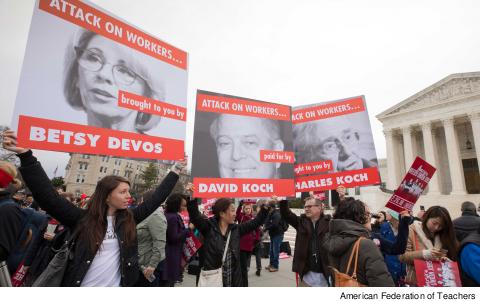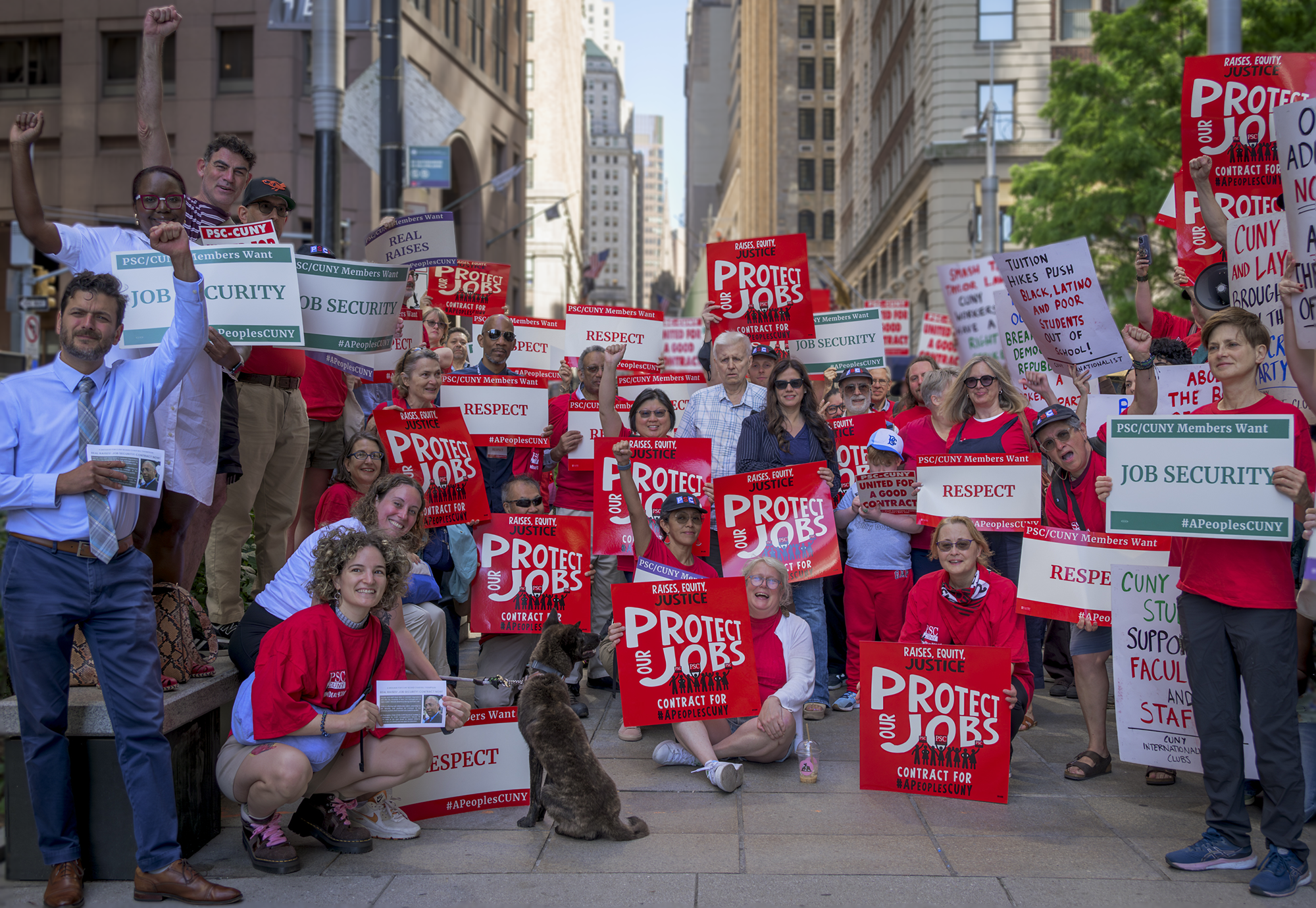 |
In his best-selling book Death of the Liberal Class, the journalist Chris Hedges posits that in a capitalist economy, liberal democracy can exist because of the strength of five institutions. When those institutions crumble, he argues, liberal democracy is unattainable, giving way to authoritarianism and gapping inequality.
One of those pillars is organized labor. One doesn’t have to be a labor partisan to understand that while the American national modus operandi has been one of corporate profit-making, organized labor has played a key role in ensuring that at least some of that economic growth is shared by workers.
LABOR’S RECORD
With the case Janus v. AFSCME expected to deal a harsh economic blow to the power of public-sector unions, it is important to understand why labor has played a significant role in American economic history:
- Union pressure can lead to vital legal protections from all forms of discrimination against workers and ensure safety in the workplace. While government agencies in charge of ensuring these protections now lack sufficient funds to do their jobs properly, many workers at least have a safety net from risks at work.
- Unions represent more than the “white working class.” Around two-thirds, or 10.6 million, of unionized workers are women or people of color, according to the Economic Policy Institute. Unions even reduce racial and gender income inequality as black unionized workers are nearly 1.5 times more likely to have benefit plans than non-union counterparts, according to a report by the Center for Economic and Policy Research. For women, public-sector workers earn 15 percent more, or about $6,500, while in a union, according to the National Women’s Law Center.
- Unions are key to reducing income inequality. As unionization grew, so did household wages. Now, as unionization rates fall each year, wages fall for everyone – except the rich. An International Monetary Fund study found the decline of union power explains the astronomical rise in the wealth of the top one percent.
- When unionized workers benefit, so do their non-union peers. Union workers earn more in wages, around 13.2 percent, compared to non-unionized workers. Yet non-union workers benefit from new labor protections and are eligible for higher wages thanks to strong unionization efforts, according to the Economic Policy Institute.
- Unions fought for the 40-hour workweek over a century ago and secured expanded health care for workers during the 1930s and 1940s.
THE RIGHT’S AGENDA
It is, of course, not a coincidence that those pushing Janus, right-to-work laws at the state level and other anti-labor initiatives have a vested interest in undoing the historic progress of unions. The Janus case – like the cases Friedrichs v. California Teachers Association and Harris v. Quinn – does not come out of nowhere. It is part of a much larger and well-financed campaign to undo the power of organized labor.
Here’s a look at some of the groups in this movement:
- The American Legislative Exchange Council is notorious for being the network connecting corporations and lawmakers together in secrecy. ALEC doesn’t just push right-to-work bills, it promotes legislation prohibiting unions from using dues for political activities, stopping minimum wage hikes and pushing privatization in states such as Michigan, Florida and Maryland.
- The State Policy Network prides itself as a group advocating for a country offering “personal freedom, innovation [and] opportunity.” Yet SPN, funded by the Koch brothers, often favors anti-worker policies such as right-to-work. In a 2016 fundraising letter, it listed a variety of “reforms” in states, including right-to-work, and told donors they have a “once-in-a-lifetime chance to reverse the failed policies of the American left.”
- The National Right to Work Foundation, as its name implies, is an advocate for the controversial right-to-work laws across the country. The organization’s legal arm was behind Harris v. Quinn, which challenged Illinois unions from collecting fees from non-union workers. The Supreme Court ruled against the union and ruled that requiring fees is against the First Amendment.
- The Center for Individual Rights (CIR) was one of the biggest boosters of the case Friedrichs v. CTA, which would have had the same effect as Janus had Justice Antonin Scalia’s death not forced the case into a 4-4 deadlock. The CIR has backed other right-wing litigation, such as attempting to have race-based affirmative action in college admissions ruled unconstitutional.
- If there is any person to blame for Janus, it is the private equity billionaire and Illinois governor Bruce Rauner. Rauner, a right-to-work zealot who called half of Chicago Public Schools teachers “illiterate,” started the lawsuit against AFSCME that evolved into the case before the Supreme Court today. Meanwhile, his assault on workers in Illinois continues to try to stop organized labor by attacking pensions, keeping right-to-work and more.
- None of the above would have happened if it wasn’t for the Koch brothers. Charles and David Koch, two right-wing billionaires, have funded anti-worker candidates such as Wisconsin Governor Scott Walker. Even now, they are offering support to destabilize public schools, promote charter schools, and weaken teachers unions in states such as Arizona, Colorado, and Florida.
A LONG HISTORY
The Janus case is simply the latest episode in a decades-long campaign to defang unions – everything from President Ronald Reagan’s busting of the air traffic controllers’ strike to widespread offshoring of industrial labor to the current administration’s National Labor Relations Board rolling back pro-labor rulings are part of this coordinated campaign. But there is another aspect of this latest attack. It is not simply an attack on public-sector labor, but the public sector itself, as these unions are the strongest and most well-funded organizations that defend public hospitals, public K-12 and higher education, social services and libraries from underfunding and privatization.
This prospect of the Janus case does, indeed, sound ominous. But unions have the power to determine their own destinies. PSC activists and organizers are out on the campuses, meeting members and agency fee payers who are either recommitting to union membership or signing up for the first time. The union will keep doing so, regardless of what the court says. More and more public-sector unions across the country are doing the same and will be able to defend their historic gains for working people against the alliance of right-wing organizations.

